A fireplace hearth is an important part of any fireplace. But what is a hearth, exactly? And what should you know about them before installing or using one? In this article, we will answer all of your questions about fireplace hearths! We’ll cover everything from what they are to how to install them and everything in between. So whether you’re a homeowner thinking about adding a fireplace to your home or you’re a professional installer, read on for all the information you need to know about fireplace hearths!
Definition of Fireplace Hearth
A hearth is defined as the floor of a fireplace, typically made of brick, stone, or metal, which extends into the room. The hearth is usually located in front of the fireplace and is where you build your fire. It’s important to choose the right material for your hearth based on both aesthetic and safety considerations. Some materials, like brick and stone, can absorb heat from the fire and radiate it back into the room, making your fireplace more efficient. Other materials, like metal, are non-combustible and can help reflect heat back into the fireplace. [1]
What Part Of The Fireplace Is The Hearth?
The hearth is the floor of the fireplace. It’s usually made of brick, stone, or other fireproof materials. The hearth extends out from the firebox and is usually surrounded by a metal grate or screen. [2]
What Is The Purpose Of A Fireplace Hearth?
A fireplace hearth is a raised platform in front of a fireplace that helps to contain the fire and protect your floor from heat damage. The hearth also provides a place to rest logs or kindling, making it easier to start a fire. In addition, many people use their fireplace hearths as decorative surfaces, adding rugs or using them to display items like vases or sculptures.
If you’re thinking about adding a fireplace to your home, be sure to include a beautiful and functional hearth in your design! Not only will it enhance the look of your space, but it will also help keep your family safe. [2]
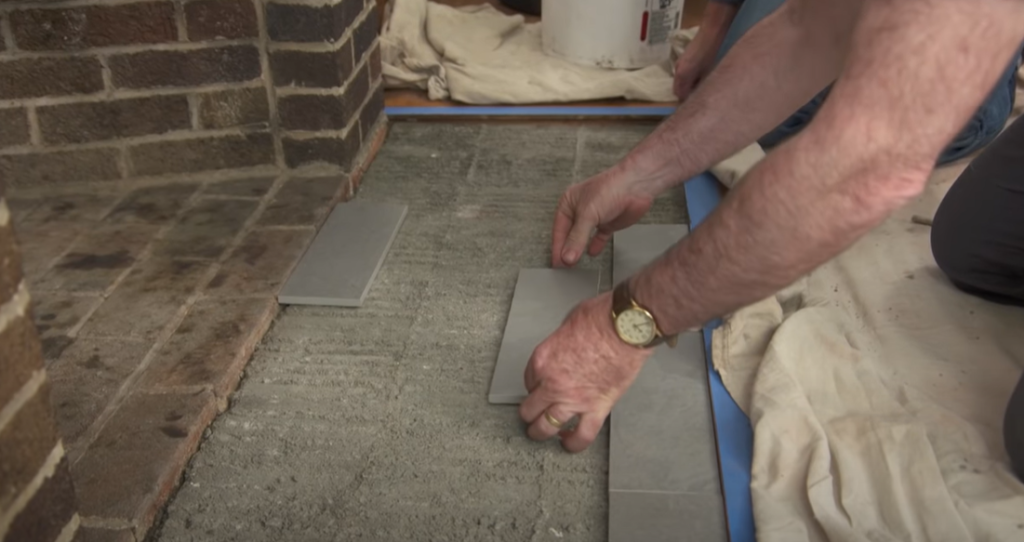
Is A Fireplace Hearth Required?
The answer to this question is a little complicated. In some areas, building codes do require a hearth in front of the firebox. However, there are many homes that were built without a hearth. If you’re not sure whether or not your home needs one, it’s best to check with your local building department. Even if a fireplace hearth isn’t required by code, there are several good reasons to have one. [2]
A Brief History of the Fireplace Hearth
The fireplace hearth has a long and storied history. For centuries, the hearth was the primary source of heat in the home. It was also used for cooking and baking. The hearth was often the gathering place for families and friends. In many homes, the fireplace was the focal point of the room.
The modern fireplace hearth has evolved significantly from its early counterparts. Today, fireplaces are primarily used for decoration and ambiance. However, they can still be functional heating sources. Fireplace hearths come in a variety of materials, including stone, brick, marble, and concrete. [3]
Why do you need a fireplace hearth?
A fireplace hearth is more than just a pretty addition to your fireplace. It serves an important purpose in protecting your floor from the intense heat of the fire, and also provides a safe place to build your fire. [4]
Types of Fireplace Hearths
There are several different types of fireplace hearths available on the market, each with their own unique benefits. Here are some of the most popular options:
- Brick: A classic choice that has been used for centuries, brick provides a timeless look that can complement any home décor style. Plus, it’s very durable and easy to maintain.
- Stone: Another popular option, stone fireplace hearths come in a wide variety of colors and textures to choose from. They’re also very durable and easy to care for.
- Marble: If you’re looking for a luxurious option, marble is a great choice. It’s beautiful and elegant, but it does require more maintenance than other materials.
- Glass: Glass fireplace hearths are becoming increasingly popular because of their modern look. They’re also easy to clean and don’t require much maintenance. [1]
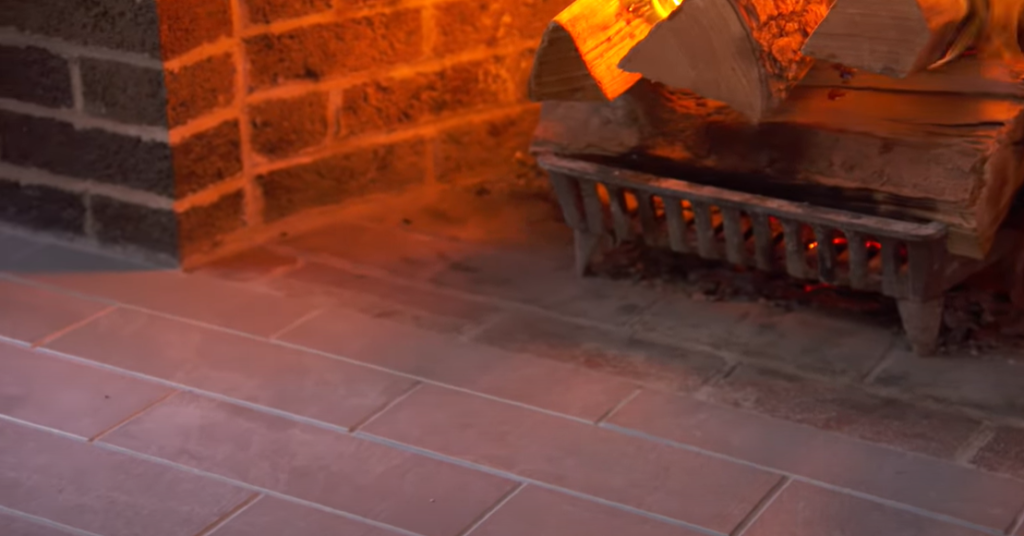
What are Hearth Rugs?
Hearth rugs are specially designed to protect your floor in front of the fireplace. They are usually made of fire-resistant materials like wool or synthetic fibers. Some hearth rugs are even treated with special chemicals to make them extra resistant to fire.
If you’re not sure what size hearth rug you need, it’s best to measure the area in front of your fireplace before you go shopping. [3]
Your Hearth’s Height
When it comes to the height of your hearth, there are a few things you need to take into consideration. First, how high is the opening of your fireplace? You’ll want to make sure that your hearth is at least as high as the opening of your fireplace so that it doesn’t stick out and look odd. Secondly, how tall are you? If you’re shorter, you may want to consider a lower hearth so that it’s easier for you to reach. And finally, how often do you plan on using your fireplace? If you’re someone who only uses their fireplace occasionally, then a taller hearth might not be necessary. [3]
Hearth Requirements For Fireplaces
Masonry Fireplace Hearth Requirements
If you have a masonry fireplace, your hearth can be made of brick, stone, or concrete. It’s important to make sure that any materials you use can withstand high temperatures without cracking or breaking. You should also avoid using materials that are highly flammable, such as wood.
One common type of masonry fireplace hearth is the Rumford style. This type of hearth is shallow and sloped, which helps reflect heat back into the room and reduces the amount of fuel needed to keep the fire going. [1]
Prefab Fireplace Hearth Requirements
If you’re considering purchasing a prefab fireplace, it’s important to know that there are certain requirements that must be met in order for the hearth to be up to code.
The first requirement is that the hearth must extend at least 16 inches in front of the firebox opening.
Another requirement is that the hearth must be at least 36 inches wide.
And finally, the hearth must project at least 20 inches into the room.
These requirements are put in place to ensure that people have a safe and enjoyable experience when using their prefab fireplace. By following these simple guidelines, you can rest assured that your fireplace will be both stylish and functional. [1]
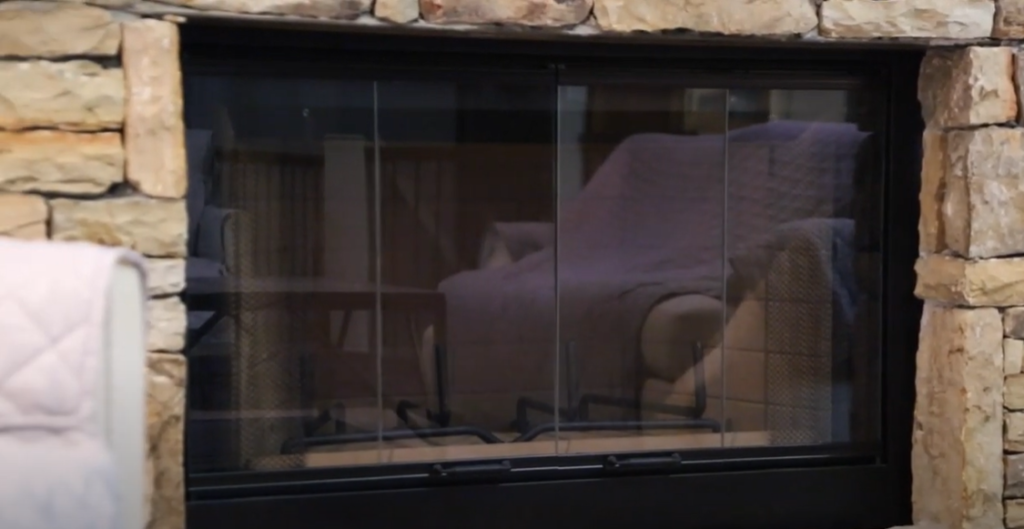
Common Types of Materials Used For Building a Fireplace Hearth
Granite
Granite is a popular choice for fireplace hearths because it is durable and heat resistant. It can also be cut into any shape or size, which makes it very versatile. However, granite is a bit more expensive than some other options. [1]
Slate
Slate is a natural stone that comes in a variety of colors, making it a popular choice for fireplace hearths. Slate is durable and easy to clean, but it can be expensive.
When choosing a material for your fireplace hearth, be sure to consider both function and aesthetics. With so many options available, you’re sure to find the perfect solution for your home. [1]
Marble
When it comes to choosing a material for your fireplace hearth, there are several options available. The most popular materials used for fireplace hearths are marble, granite, and other stone varieties. However, there are also many different types of wood that can be used for this purpose as well. If you’re looking for something a little more unique, you could even opt for glass or metal! No matter what material you choose, make sure it’s durable and heat-resistant so that it will last long and look great in your home. [1]
Soapstone
If you’re looking for a more classic look, soapstone hearths are a great option. Soapstone is a natural stone that has been used for centuries in fireplaces. It’s known for its durability and heat-resistant qualities. Soapstone hearths come in a variety of colors and styles to match any home’s décor.
If you’re considering a soapstone hearth, there are a few things to keep in mind. First, because it is a natural stone, each piece of soapstone is unique. This means that the color and grain of your hearth may vary slightly from the samples you’ve seen in stores. Second, soapstone is a soft stone, so it can scratch easily. You’ll want to be careful when placing logs or other heavy objects on your soapstone hearth. [1]
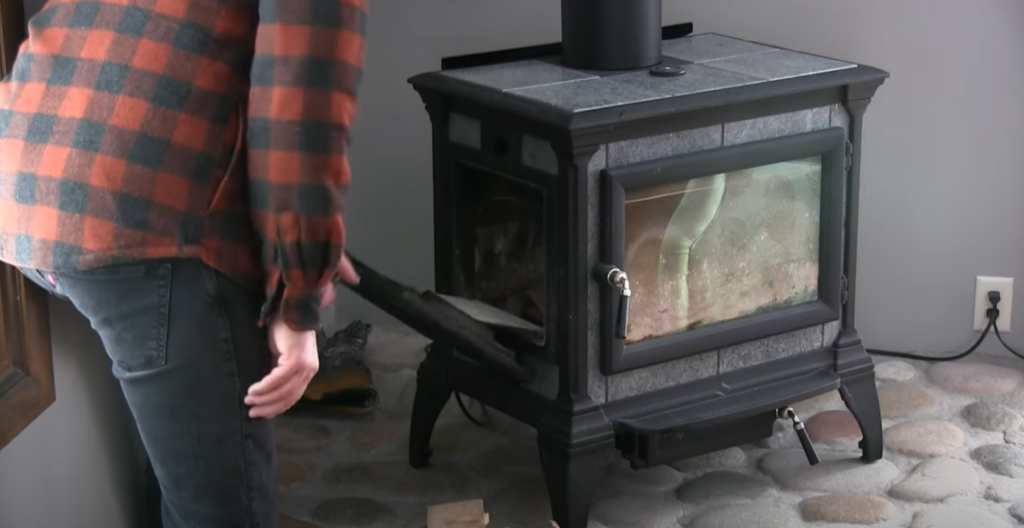
Limestone
If you have a limestone hearth, it’s important to know that it is a very soft stone. This means that it can be easily scratched or chipped if not treated carefully. Limestone also tends to be a bit more porous than other types of stone, so it can absorb spills more easily. For these reasons, it’s important to take extra care when cleaning a limestone hearth.
One of the best ways to clean a limestone hearth is with a solution of mild soap and water. You can also use a soft brush to remove any dirt or debris that may be on the surface. Be sure to rinse the hearth well after cleaning it to remove any soap residue. [1]
Ceramic
If you’re considering a ceramic or stone fireplace hearth, there are a few things you should know. Ceramic and stone are both durable and heat-resistant, making them ideal materials for a fireplace hearth. However, they each have their own unique benefits and drawbacks.
Ceramic is a popular choice for fireplace Hearths because it is inexpensive and easy to clean. However, ceramic can crack under high temperatures, so it’s important to choose a quality product that can withstand the heat of your fire. [1]
Brick
If you have a brick-and-mortar fireplace, your hearth is the raised area in front of the firebox where you can rest logs or kindling. The hearth also serves as a decorative feature and may be made of stone, tile, brick, or another material.
A common mistake people make is assuming that the entire surround of a fireplace is the hearth. But the surround encompasses not only the hearth but also the mantel (or lintel) above and any other architectural details on either side of the fireplace opening. [1]
Concrete
If you have a wood-burning fireplace, you’ll need to build a hearth out of noncombustible materials. The most common choices are concrete, stone, or brick. You can purchase these materials at your local home improvement store.
Concrete is the most inexpensive option, and it’s easy to work with. Stone and brick are more expensive, but they offer a more finished look. If you’re not sure which material to choose, ask a sales associate for advice. [1]
How Does Your Fireplace Hearth Height Impact Doors and Other Accessories?
Inside Fit Fireplace Doors
Your fireplace hearth’s height can have an impact on the doors and other accessories you choose for your fireplace. If your hearth is too high, it can make it difficult to find doors that fit properly. Conversely, if your hearth is too low, it may not provide adequate support for some of the heavier doors and accessories.
If you’re looking for a way to add a little extra flair to your fireplace, consider adding a set of inside fit fireplace doors. These doors sit on top of the hearth, so they don’t require any special installation. They’re also a great way to add a pop of color or pattern to your fireplace. [1]
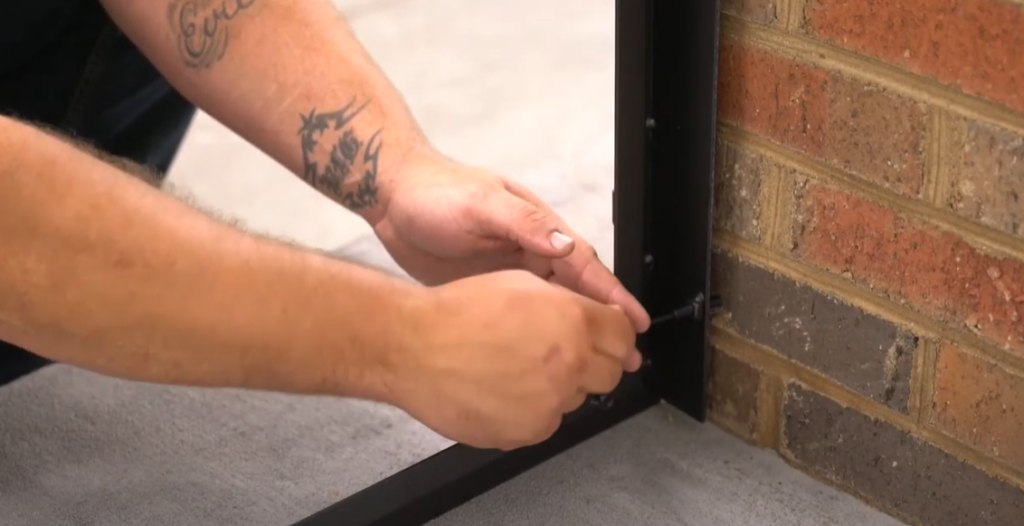
Overlap Fit Fireplace Doors
If you have a gas, wood burning, or pellet stove, it is important to know the different types of hearth pads available and how to properly install them. A hearth pad is a platform that helps protect your flooring from heat damage and also makes it easier to sweep and clean up any ashes that may fall out of the fire pit. [1]
Popular Hearth Accessories
Fireproof Hearth Rugs
A hearth rug is a must if you have a wood-burning or gas fireplace. Not only do they add style and comfort to your space, but they also protect your floor from sparks and embers. Look for a fireproof hearth rug that’s made from natural fibers like wool or jute. You can find them in a variety of colors and patterns to match your décor.
Another popular accessory for fireplace hearths is a set of tools. This includes a broom, dustpan, poker, tongs, and shovel. These tools come in handy for cleaning up ashes and embers, as well as rearranging logs on the fire. Many sets also include a decorative stand to keep everything organized and within reach. [1]
Log Holders
If you have a wood-burning fireplace, you’ll need some kind of log holder or grate to keep the logs off the ground. This not only protects your floor from getting dirty, but also allows air to circulate around the logs so they can burn more efficiently. There are many different styles of log holders and grates available, so you can choose one that fits your home’s décor. [1]
Bellows
Bellows are one of the oldest ways to get air into a fire. They are still used today in some parts of the world. A set of bellows is usually two leather bags connected by a tube. The user squeezes the bags together, which forces air through the tube and into the fire.
Some types of bellows have a nozzle on the end that can be used to direct the airflow. This can be helpful when starting a fire or keeping it going in a windy area. [1]
Maintenance and Safety
A fireplace hearth is an important part of your home, and it’s crucial to keep it in good working order. Here are some tips on how to do that:
- Inspect your hearth regularly for cracks or other damage. If you find any, call a professional right away to repair them.
- Keep the area around your hearth clean and free of debris.
- Never leave a fire unattended – always extinguish it completely before leaving the house or going to bed.
- Have your chimney cleaned at least once a year by a certified professional. [3]
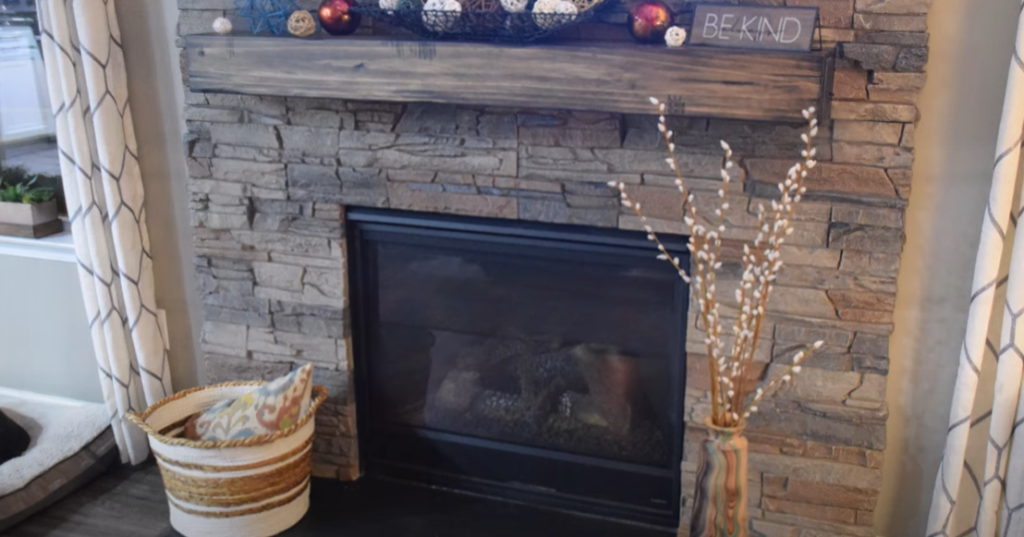
Do Gas and Electric Fireplaces Need a Hearth?
The answer to this question is a resounding no! Gas and electric fireplaces don’t require a hearth because there’s no need for one. The fireplace itself is sealed, so there’s no risk of sparks or embers flying out and starting a fire. Plus, gas and electric fireplaces are usually much smaller than wood-burning fireplaces, so they don’t need a large space in front of them for safety reasons.
If you do decide to add a hearth to your gas or electric fireplace, be sure to check with your local code first. Some codes require that fireplaces have a certain amount of space in front of them, so you’ll need to make sure your hearth meets those requirements. [4]
Comparing Different Types of Fireplace Hearths
A fireplace hearth is an essential element in any fireplace, and it serves both functional and aesthetic purposes. Below is a comparison of various indicators for different types of fireplace hearths.
| Hearth Type | Material | Cost (Average) | Heat Efficiency (%) |
|---|---|---|---|
| Brick Hearth | Brick | $500 – $2,000 | 65-75% |
| Stone Hearth | Natural Stone | $1,000 – $4,000 | 70-80% |
| Tile Hearth | Ceramic Tile | $300 – $1,500 | 60-70% |
| Concrete Hearth | Concrete | $400 – $1,800 | 65-75% |
| Wood Hearth | Wood | $200 – $1,000 | 50-60% |
Explanation of the table:
- The table provides a comparison of different types of fireplace hearths based on four key indicators: hearth type, material, average cost, and heat efficiency.
- Hearth types include Brick Hearth, Stone Hearth, Tile Hearth, Concrete Hearth, and Wood Hearth.
- The material column indicates the primary material used for constructing the hearth.
- Average cost ranges from the lower to upper estimates for installing each type of hearth.
- Heat efficiency is given as a percentage, representing how effectively the hearth retains and radiates heat into the room.
FAQ
What is the difference between a fireplace and hearth?
A fireplace is the entire structure, which contains the firebox, where the wood burns, and the hearth. The hearth is the floor of the fireplace, usually made of brick, stone or concrete.
The purpose of a hearth is twofold: it protects the floor from heat damage and it provides a place to sit by the fire. Fireplace hearths are often decorated with rugs or tiles.
If you have a wood-burning fireplace, your hearth must be large enough to catch sparks and embers that fly out of the firebox. It must also be deep enough to hold several inches of ashes.
Should a fireplace have a hearth?
The answer to this question is not as simple as a yes or no. While many people believe that all fireplaces should have a hearth, it really depends on the specific fireplace and what look you are trying to achieve for your home. If you are unsure whether or not your fireplace needs a hearth, we suggest consulting with a professional who can help you make the best decision for your space.
What is the floor in front of a fireplace called?
The floor in front of a fireplace is typically called the hearth. The word “hearth” can also refer to the firebox itself, or the entire fireplace structure.
The term “hearth” originates from Old English and Germanic times, when people built their homes out of wood and stone. The main source of heat in these homes came from open fires that were typically placed in the center of the home.
What is code for a fireplace hearth?
A fireplace hearth is the raised area in front of a fireplace. It can be made of stone, bricks, metal, or other materials. The hearth is usually level with the floor and extends out into the room.
The purpose of a hearth is to contain any burning embers or logs that may fall out of the fire. It also serves as a place to rest ashes after they have been swept up. A hearth can also help protect your floor from heat damage.
What can I use for a fireplace hearth?
If you’re looking for something a little more unique than the classic brick or stone, there are many other options available for fireplace hearths. Use your imagination- almost any material that can withstand heat can be used as a fireplace hearth. Some popular choices include:
- Tiles
- Slate
- Marble
- Concrete
- Granite
Can a hearth be flush with the floor?
A hearth doesn’t have to be raised off the ground- it can be flush with the floor, as well. This is a popular choice for more contemporary designs. If you choose to go this route, make sure that the material you select can withstand high temperatures without being damaged.
How does a fireplace hearth enhance safety?
A fireplace hearth enhances safety by providing a barrier between the open flames or hot embers in the fireplace and the surrounding floor. It helps prevent accidental fires and protects the floor from heat damage.
What materials are commonly used for fireplace hearths?
Common materials used for fireplace hearths include stone, brick, tile, concrete, and even wood. The choice of material depends on the aesthetic preferences and functional requirements of the homeowner.
Do fireplace hearths have specific building regulations?
Yes, fireplace hearths are subject to building regulations to ensure safety. Regulations may vary by location, but they typically specify dimensions, materials, and clearance requirements to reduce fire hazards.
Can a fireplace hearth serve as a decorative element in a room?
Yes, a fireplace hearth can serve as a decorative element. It can be designed with various materials, colors, and patterns to complement the room’s aesthetics and add a focal point to the space.
Are there different types of fireplace hearths?
Yes, there are different types of fireplace hearths, including raised hearths, flush hearths, and corner hearths. The choice of type depends on the fireplace’s design and the homeowner’s preferences.
What is the purpose of the hearth extension?
The hearth extension, also known as the hearth pad, serves as an additional safety feature. It extends beyond the fireplace opening and provides an extra layer of protection against sparks and embers.
How do you clean and maintain a fireplace hearth?
To clean and maintain a fireplace hearth, you can sweep or vacuum away ashes and debris regularly. Depending on the material, you may need to use specific cleaners or sealants to keep it in good condition.
Can a fireplace hearth be customized to match the room’s decor?
Yes, a fireplace hearth can be customized to match the room’s decor. You can choose materials, colors, and designs that blend seamlessly with the overall aesthetics of the space.
What are some creative ways to decorate a fireplace hearth?
Creative ways to decorate a fireplace hearth include using decorative tiles, placing candles or potted plants on it, or incorporating artwork and sculptures to make it a stylish focal point in the room.
Is it possible to retrofit a fireplace hearth into an existing fireplace?
Yes, it is possible to retrofit a fireplace hearth into an existing fireplace. This can be done by adding a hearth extension or modifying the existing structure to meet safety and aesthetic requirements.
Useful Video: Fireplace Hearth Makeover – DIY Granite or Stone Remodel
Conclusion
As you can see, there’s a lot to consider when it comes to fireplace hearths. But don’t let that intimidate you- the perfect hearth for your home is out there, you just have to find it! With a little bit of research and some creative thinking, you’re sure to end up with a beautiful and functional fireplace that will keep you warm all winter long. Thanks for reading! I hope this article was helpful. If you have any questions or comments, please feel free to leave them below. Happy shopping!
References:
- https://www.fireplacedoorsonline.com/what-is-a-fireplace-hearth.html
- https://fireplaceuniverse.com/fireplace-hearth/
- https://www.efireplacestore.com/fireplace-hearth-then-and-now.html
- https://www.direct-fireplaces.com/resources/guide-to-buying-the-right-hearth-for-your-fireplace/


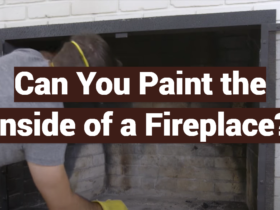







Leave a Review